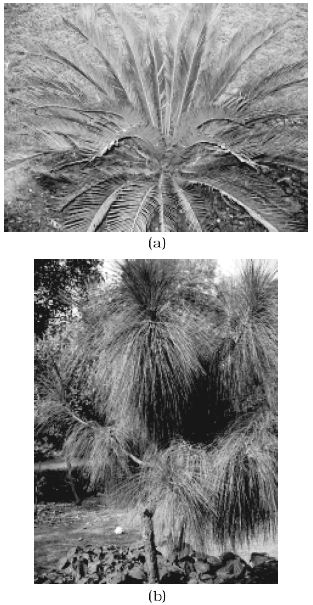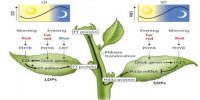The gymnosperms are plants in which the ovules are not enclosed by any ovary wall and remain exposed both before and after fertilization. The seeds that develop post-fertilisation, are not covered. i.e., are naked. Gymnosperms include medium-sized trees or tall trees and shrubs (Figure).

Fig: (a) Cycas, (b) Pinus
One of the gymnosperms, the giant redwood tree Sequoia is one of the tallest tree species. The roots are generally tap roots. Roots in some genera have fungal association in the form of mycorrhiza (Pinus). while in some others (Cycas) small specialized roots called coralloid roots are associated with N2 fixing cyanobacteria. The stems are unbranched (Cycas) or branched (Pinus, Cedrus). The leaves may be simple or compound. In Cycas the pinnate leaves persist for a few years. The leaves in gymnosperms are well-adapted to withstand extremes of temperature, humidity and wind. In conifers, the needle-like leaves reduce the surface area. Their thick cuticle and sunken stomata also help to reduce water loss.
The gymnosperms are heterosporous; they produce haploid microspores and megaspores. The two kinds of spores are produced within sporangia that are borne on sporophylls which are arranged spirally along an axis to form lax or compact strobili or cones. The strobili bearing microsporophylls and mierosporangia are called microsporangiate or male strobili.
The microspores develop into a male gametophytic generation which is highly reduced and is confined to only a limited number of cells. This reduced gametophyte is called a pollen grain.
The development of pollen grains takes place within the microsporangia. The cones bearing megasporophylls with ovules or megasporangia are called macrosporangiate or female strobili. The male or female cones or strobili may be borne on the same tree (Pinus) or on different trees (Cycas).














